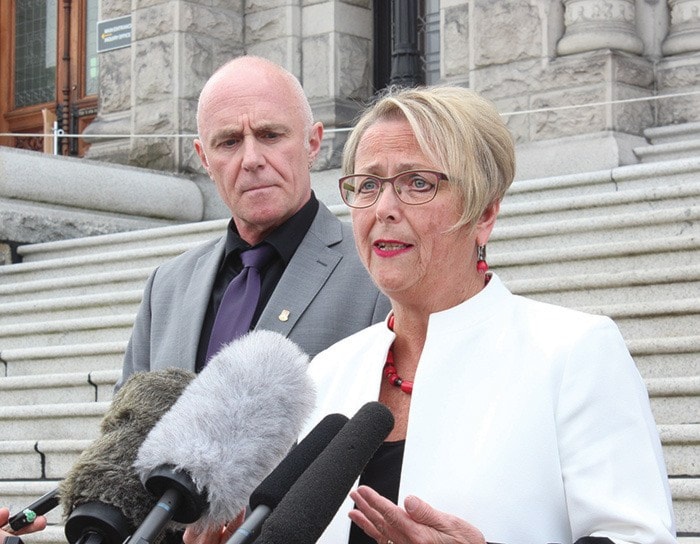July 25, 2015 started the same as any other day for Scott Adams.
The Victoria resident woke up, did his cross fit workout and around 5:30 p.m., took his two dogs Rocky and Dixie out for a walk from Gorge Road to Harriet Road and back home — a route they walk every day.
It’s a walk the trio had done countless times over the years, but Adams only made it halfway before he blacked out. He woke up in the hospital three days later with no memory of what happened.
Adams had been hit by a car. He had several severe compound fractures, which led to immense blood loss. But it was the 40 blood infusions he received from volunteer donors that saved his life.
“The driver picked me, a needle out of a haystack, and I happened to be in the eye of the needle and he threaded it,” said the now 57-year-old. “I went through the windshield of this car, but I didn’t have a spinal chord injury or head injury.”
Now Adams is adding his voice to the growing chorus of people, including NDP health critic Judy Darcy and more than 6,000 British Columbians, who are calling on the provincial government to ban paid plasma clinics in B.C.
“I wouldn’t have made it but for the transfusions I took after the compound fractures I had. My friends all managed to give blood on my behalf,” Adams said. “It’s nice to have that community response and I wouldn’t want to see it go any other way.”
But the voluntary act of donating plasma could be changing.
Last February, Canadian Plasma Resources opened a pay-for-plasma clinic in Saskatchewan, where people walk out with a $25 gift card for their donation. But, according to Canadian Blood Services, the opening of the clinic has resulted in fewer voluntary blood donations of plasma, the clear liquid portion of blood that remains after red and white blood cells, platelets and other cellular components are removed.
Now, the privately-owned company has set its sights on B.C., hoping to open clinics in the near future.
Andrew Cumming is a haemophiliac, and a survivor of the tainted blood crisis, which struck the country in the 1980s, infecting roughly 2,000 Canadians with HIV and as many as 30,000 with hepatitis C. He hopes what happened to him won’t happen to anyone else.
There are a “litany” of risks associated with pay-for-plasma clinics, Cumming said, including incentivizing disenfranchised populations to lie on their medical history in order to get paid.
Health Minister Terry Lake said he supports the efforts of the Canadian Blood Services to expand voluntary donations, but plasma from paid donors currently represents about 80 per cent of Canada’s supply, mostly coming from the U.S.
The Canadian Hemophilia Society has stated that paid plasma donations are necessary for Canada’s needs, and whether donors are paid or not, the safety of supply depends on testing, Lake said in an interview.
“Both Health Canada and Canadian Blood Services have said safety is not an issue,” Lake said. “It’s not the 1980s any more. Technology is there, the checks and balances are in place to protect the blood supply.”
But Cumming disagreed, noting technologies won’t be able to catch new viruses that make their way into the blood system.
“There have been some (viruses) that have been potentially very dangerous — Zika, Mad Cow, Sars. None have turned out to be the massive health crisis that HIV was, but there will be one and it will come in through disadvantaged communities where this company chooses to operate,” Cumming said.
“There’s technology to screen for the viruses that we already know about, it’s precisely the ones we don’t know about that are going to kill the next 5,000 people.”
— With files from Tom Fletcher.
